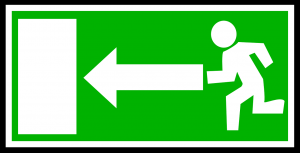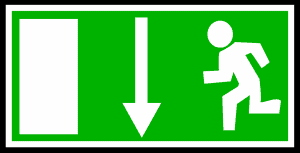Emergency Lighting Comes to Help in Case of Power Failure




As much as we do not appreciate the importance of emergency lighting, it is vital in a disaster such as a fire. In most cases, the main power supply stops working because flames damage it, or the power supply is interrupted for some other reason and cannot provide lighting. Imagine if this happened at night. Without the necessary emergency lighting, the building will sink into darkness. People in the building are likely to panic because they will not see where the evacuation exit is. This panic can even lead to physical injury.
The purpose of emergency lighting
is to ensure that safe lighting is provided automatically in a power failure. In addition, the objective of an emergency lighting system is to implement a safe route out from the building for all the occupants illuminating the area utilizing appropriate lighting and directional signs.
You should consult a competent person and decide what kind of lighting your premises will need, what type of power supply, etc. This qualified person will help you choose the most appropriate equipment, which will, of course, meet British standards.
For example, your building may require a different lighting system within other parts of the building to give sufficient illumination for the specified area; this can be determined using a Risk Assessment.
All designers who produce emergency lighting must comply with the British standard BS 5266-1.
Emergency escape lighting is required by law
Specialists divide emergency lighting into emergency escape lighting and standby lighting.
Emergency escape lighting is intended to provide brightness that people will use if they need to evacuate the building in a disaster.
By law, the responsible persons are obliged to provide the necessary emergency lighting, which works automatically and is always in working order.
According to The Regulatory Reform (Fire Safety) Order 2005:
“emergency routes and exits must be indicated by signs; and emergency routes and exits requiring illumination must be provided with emergency lighting of adequate intensity in the case of failure of their normal lighting.”
The idea of emergency escape lighting is to direct people to the exit during the evacuation. Therefore, this equipment must always be in working order because we never know when we will need it. This type of lighting includes fire exit signs, emergency lighting, and emergency lighting barriers.
Standby lighting is not a requirement of the law. Depending on the needs of the building, it is up to you whether you will use it or not.
Minimum and maximum operation of the lighting
Depending on the size and difficulty of the building, a competent person must determine how long it will take people to evacuate the building. During the evacuation process, the lighting must continue to work to direct people to the exit.
The minimum duration of operation of the emergency lighting if the main power supply is damaged is 1 hour. But this working time is not enough if the premises cannot be evacuated immediately. In such cases, you will need emergency lighting that lasts 3 hours and in which the power is restored without waiting for the batteries to evacuate and be recharged.
Types of power supply
The types of power supply can be Self-contained – single point or Central Battery Source.
Installation of Self-contained – single point is fast and cheap, and the maintenance costs are low. But the battery life can be affected by conditions such as high or low temperature. And depending on the environment in which it is placed, the battery’s energy can continue for two to four years.
With a central battery source, the installation price is high because a fireproof cable is used here. But maintenance after that is more manageable, and the batteries last from 5 to 25 years, depending on the type, as they are not affected by high or low temperatures.
Like any emergency system, it will require regular checks and maintenance to ensure that it remains operational. Emergency lighting must always be in good working order. Because of this, by testing them, you must ensure that they stay working all the time.
In addition, the system will contain some means of a battery backup system that do not last a lifetime.
We can carry out regular checks to ensure your batteries are cycled within your system and that your lights will illuminate during a power failure.
When installing and maintaining emergency lighting systems, we strictly follow BS.5266 standards and record everything within site safety files.
Maintenance
Like any emergency system, it will require regular checks and maintenance to ensure that it remains operational. Emergency lighting must always be in good working order. Because of this, by testing them, you must ensure that they stay working all the time.
In addition, the system will contain some means of a battery backup system that do not last a lifetime.
We can carry out regular checks to ensure your batteries are cycled within your system and that your lights will illuminate during a power failure.
When installing and maintaining emergency lighting systems, we strictly follow BS.5266 standards and record everything within site safety files.
